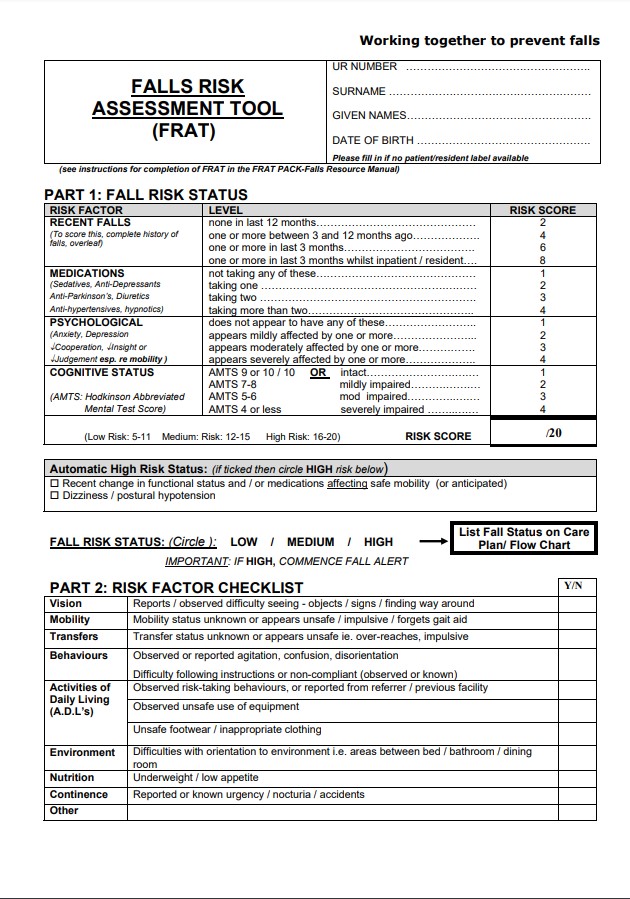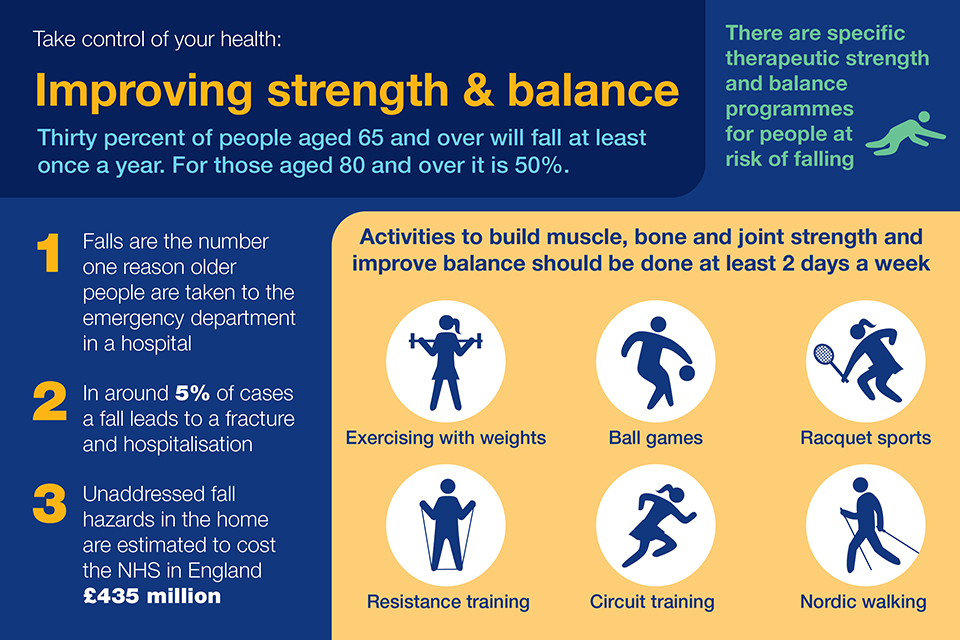Things about Dementia Fall Risk
Things about Dementia Fall Risk
Blog Article
The 9-Minute Rule for Dementia Fall Risk
Table of ContentsThings about Dementia Fall RiskGetting The Dementia Fall Risk To WorkDementia Fall Risk for DummiesThe Buzz on Dementia Fall Risk
An autumn danger evaluation checks to see exactly how most likely it is that you will certainly fall. It is mostly provided for older grownups. The analysis usually consists of: This includes a series of inquiries concerning your total health and wellness and if you have actually had previous drops or issues with equilibrium, standing, and/or walking. These devices evaluate your stamina, balance, and stride (the method you walk).STEADI includes screening, analyzing, and treatment. Interventions are suggestions that may lower your danger of dropping. STEADI includes 3 steps: you for your danger of succumbing to your risk elements that can be improved to try to prevent drops (as an example, balance problems, damaged vision) to minimize your risk of falling by utilizing reliable approaches (for instance, giving education and learning and resources), you may be asked a number of inquiries consisting of: Have you dropped in the past year? Do you feel unsteady when standing or strolling? Are you worried regarding dropping?, your supplier will examine your strength, equilibrium, and gait, using the adhering to fall evaluation devices: This examination checks your gait.
Then you'll sit down once more. Your company will inspect for how long it takes you to do this. If it takes you 12 seconds or more, it may imply you go to higher threat for a fall. This examination checks toughness and balance. You'll being in a chair with your arms crossed over your breast.
Relocate one foot halfway ahead, so the instep is touching the big toe of your other foot. Relocate one foot fully in front of the other, so the toes are touching the heel of your other foot.
Dementia Fall Risk Fundamentals Explained
The majority of drops take place as an outcome of multiple adding aspects; as a result, taking care of the threat of falling begins with recognizing the variables that add to fall threat - Dementia Fall Risk. A few of one of the most appropriate danger aspects consist of: Background of previous fallsChronic medical conditionsAcute illnessImpaired stride and balance, lower extremity weaknessCognitive impairmentChanges in visionCertain high-risk medicines and polypharmacyEnvironmental elements can additionally increase the threat for drops, including: Insufficient lightingUneven or damaged flooringWet or slippery floorsMissing or damaged hand rails and get barsDamaged or improperly fitted tools, such as beds, mobility devices, or walkersImproper use assistive devicesInadequate guidance of individuals staying in the NF, including those who show hostile behaviorsA successful loss danger monitoring program calls for a complete medical analysis, with input from all members of the interdisciplinary team

The care strategy must additionally include interventions that are system-based, such as those that promote a safe atmosphere (ideal lighting, hand rails, grab bars, etc). The performance of the treatments should be reviewed periodically, and the care plan changed as needed to mirror adjustments in the autumn danger analysis. Implementing a fall risk monitoring system utilizing evidence-based ideal technique can decrease the prevalence of drops in the NF, while limiting the capacity for fall-related injuries.
Some Ideas on Dementia Fall Risk You Need To Know
The AGS/BGS standard advises screening all grownups aged 65 years and older for loss danger annually. This testing is composed of asking people whether they have actually dropped 2 or even more times in the previous year or sought clinical attention for a fall, or, if they have not dropped, whether they really feel unsteady when strolling.
Individuals that More Help have dropped as soon as without injury ought to have their equilibrium and gait examined; those with stride or balance irregularities should get added assessment. A background of 1 fall without injury and without stride or balance problems does not require additional assessment beyond continued annual fall danger screening. Dementia Fall Risk. An autumn threat assessment is called for as component of the Welcome to Medicare assessment

About Dementia Fall Risk
Documenting a drops background is among the quality indications for fall prevention and administration. A critical component of danger analysis is a medication testimonial. Numerous classes of medicines enhance loss risk (Table 2). copyright medications specifically are independent forecasters of falls. These drugs often tend to be sedating, change the sensorium, and impair equilibrium and gait.
Postural hypotension can typically be eased by decreasing the dosage of blood pressurelowering drugs and/or quiting medications that have orthostatic hypotension as a side result. Use above-the-knee assistance hose and copulating the head of the bed boosted might also reduce postural reductions in high blood pressure. The advisable elements of a fall-focused health examination are shown in Box 1.

A TUG time above or equal to 12 seconds suggests high fall threat. The 30-Second Chair Stand examination analyzes lower extremity toughness and equilibrium. Being incapable to stand up Get the facts from a chair of knee height without using one's arms shows boosted autumn danger. The 4-Stage Equilibrium examination assesses static equilibrium by having the individual stand in 4 positions, each considerably a lot more difficult.
Report this page